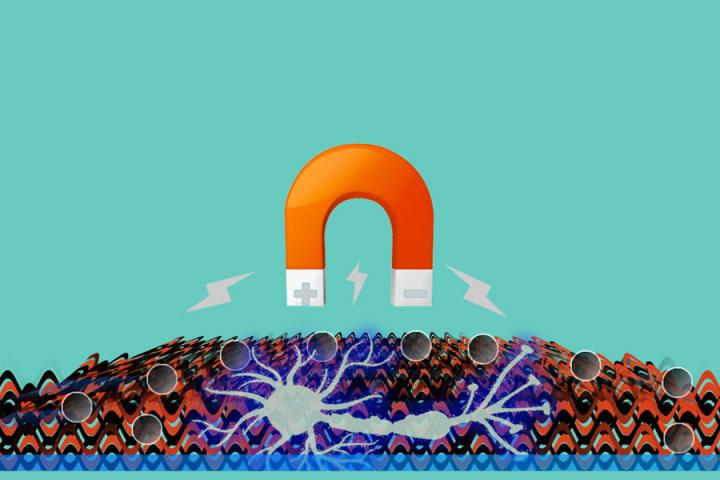Magnetic Gel Could Someday Treat Chronic Pain
/By Pat Anson, Editor
Magnet therapy has been used for thousands of years to treat arthritis, inflammation and other chronic illnesses. Today therapeutic magnets can be found in bracelets, shoes, clothing, mattresses and dozens of other products, sold by companies that claim magnets relieve pain, improve blood flow and even flush out toxins.
It's a controversial theory and there is little science to support the medical use of magnets. One critic has even called magnet therapy “a billion-dollar boondoggle.”
But maybe there’s something to it after all.
UCLA researchers have demonstrated that a gel-like material containing tiny magnetic particles can be used to relieve chronic pain caused by disease or injury. In a study published in the journal Advanced Materials, they say the biomechanical force of magnets can be used on damaged cells to help them heal.
"Much of mainstream modern medicine centers on using pharmaceuticals to make chemical or molecular changes inside the body to treat disease," says principal investigatorDino Di Carlo, PhD, a UCLA professor of bioengineering. "However, recent breakthroughs in the control of forces at small scales have opened up a new treatment idea -- using physical force to kick-start helpful changes inside cells. There's a long way to go, but this early work shows this path toward so-called 'mechanoceuticals' is a promising one."
Di Carlo and his colleagues used magnetic particles inside a gel to manage cell proteins that control the flow of calcium ions. The proteins are on the cell's membrane and play a role in the sensations of touch and pain. When damaged by injury or disease, these “excitable” neuron cells continually send pain signals.
"Our results show that through exploiting 'neural network homeostasis,' which is the idea of returning a biological system to a stable state, it is possible to lessen the signals of pain through the nervous system," said lead author Andy Kah Ping Tay, a recent UCLA doctoral graduate. "Ultimately, this could lead to new ways to provide therapeutic pain relief."
UCLA IMAGE
To make the magnetized gel, UCLA researchers used hyaluronic acid, a gel-like material found naturally in the spinal cord and brain. Hyaluronic hydrogel can also be produced artificially and is used in cosmetics and other beauty products as a filler and moisture barrier.
The researchers put tiny magnetic particles into the gel and then grew a type of primary neural cell -- dorsal root ganglion neurons – embedded inside the gel. In laboratory tests, they applied a magnetic field to generate a pulling force on the particles, which was transmitted through the gel to the embedded neurons.
The researchers found that the magnetically induced pulling led to an increase in calcium ions in the neurons. When they increased the magnetic force steadily over time, the neurons adapted to the continuous stimulation by reducing the signals for pain. In effect, researchers created a form of neuromodulation using magnets -- an old theory put to a new use.
In addition to treating pain, researchers say the magnetic gel could be modified with different biomaterials to treat heart disease, muscle disorders and other health conditions.
The UCLA research was funded by a New Innovator Award grant from the National Institutes of Health.




